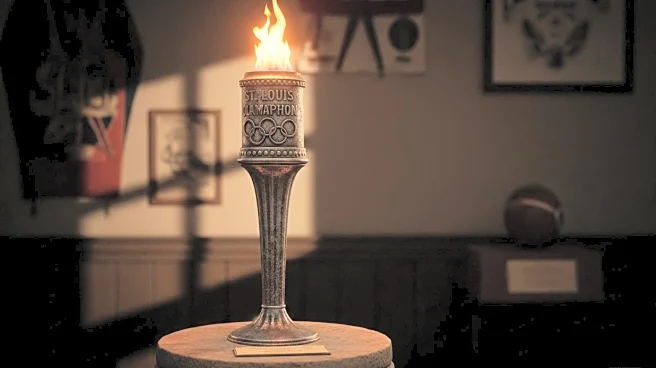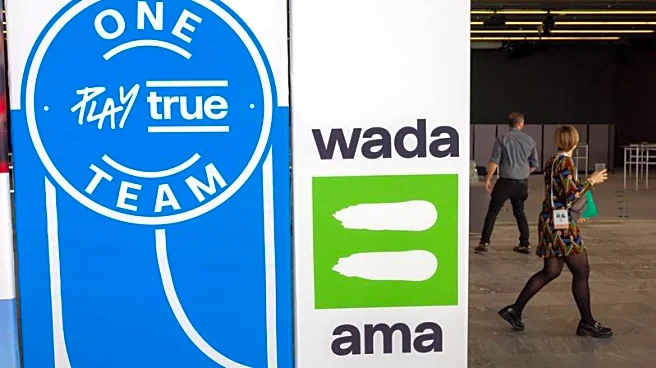What's Happening?
The 1904 Olympic Marathon in St. Louis, held alongside the World's Fair, is remembered as one of the most bizarre events in Olympic history. American runner Thomas Hicks won the marathon under extraordinary circumstances, involving the use of strychnine, a toxic substance, to enhance his performance. Hicks, suffering from the heat and dust, was denied water by his support team and instead given egg whites mixed with strychnine. Despite the dangers associated with strychnine, which can cause convulsions and asphyxia, Hicks continued the race. His team later provided him with brandy to wash down another dose of the concoction. Hicks was carried over the finish line by his support team, who held him up as he shuffled his feet, and was awarded the gold medal. The race was marred by another scandal when Fred Lorz, who initially dropped out, hitched a ride back to the stadium and crossed the finish line first, claiming victory as a joke. Lorz was disqualified, and Hicks was declared the winner.
Why It's Important?
The 1904 marathon highlighted significant issues in sports ethics and athlete safety, raising questions about the use of performance-enhancing substances and the conditions under which athletes compete. The event underscored the need for regulations to ensure fair competition and protect athletes' health. The marathon's chaotic nature and the scandals surrounding it nearly led to the event's abolition. It serves as a historical example of the lengths to which athletes and their teams might go to secure victory, prompting ongoing discussions about doping and integrity in sports. The incident also reflects the evolving standards of sportsmanship and the importance of maintaining ethical practices in competitive events.
What's Next?
While the 1904 marathon is a historical event, its implications continue to resonate in modern sports. The International Olympic Committee and other sports organizations have since implemented strict anti-doping regulations to prevent similar occurrences. The marathon's legacy contributes to ongoing efforts to ensure athlete safety and fair play. Future competitions are likely to see increased scrutiny and advancements in testing methods to detect and deter the use of banned substances. The story of Thomas Hicks remains a cautionary tale, influencing policies and attitudes towards doping in athletics.
Beyond the Headlines
The 1904 marathon reflects broader cultural and ethical shifts in sports. It highlights the historical context of performance enhancement and the societal pressures on athletes to succeed at any cost. The event's bizarre nature and the use of strychnine illustrate the lack of scientific understanding and regulatory oversight at the time. It also points to the carnival-like atmosphere of early Olympic Games, contrasting with the more structured and serious tone of modern competitions. The marathon's legacy continues to inform discussions on athlete welfare and the ethical boundaries of competitive sports.












